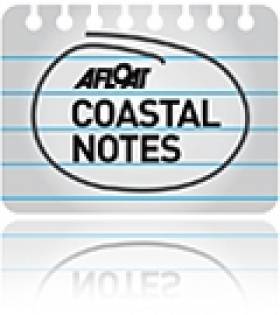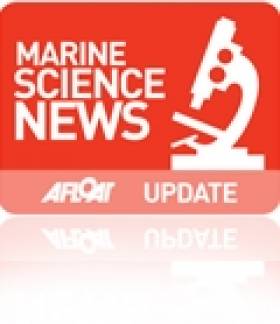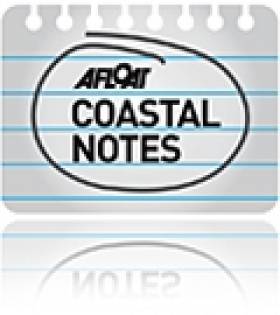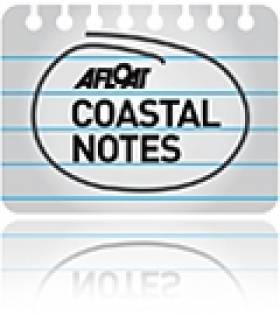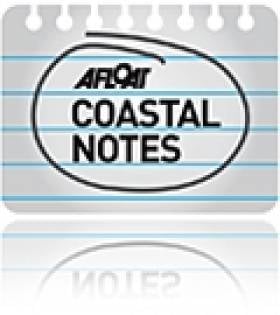Displaying items by tag: water quality
94% Of Irish Beaches Meet Stricter Bathing Quality Standards
#CoastalNotes - Ireland gets an 'A' for seaside bathing, as 94% of beaches have met the EU's new stricter water quality standards.
And as RTÉ News reports, three out of every four Irish beaches have been rated as 'excellent' on the new scale for levels of microbiological contaminants, which is "twice as strict" as in previous years.
But seven out of 136 bathing places monitored by the Environmental Protection Agency (EPA) in 2014 still failed the test.
Youghal in Cork, Clifden and Ballyloughane in Galway, Rush's south beach in North Co Dublin, Duncannon in Wexford, Ardmore in Waterford and Liliput on Lough Ennell in the Midlands were all rated 'poor', for the most part due to wastewater discharges.
Ten other popular seaside spots – including Trá na mBan in Spiddal and the beaches at Merrion Strand, Loughshinny and Balbriggan's front strand in Co Dublin - were rated as 'sufficient' as they are still prone to periodic pollution episodes, according to The Irish Times.
But there was good news for the denizens of Trá Inis Oirr in Galway Bay, which scored an 'excellent' rating in its first year on the EPA's list.
The Aran Islands beach was added in the same year that nearby Trá gCaorach became a first-time winner in the National Green Coast Awards.
The EPA's Splash website maps out the latest bathing quality ratings for beaches around and throughout Ireland. The agency's report on bathing quality in 2014 can be found HERE.
Irish Coastal Water Quality 'Generally Good' Says Final Report On Biological Effects & Chemical Measurements
#MarineScience - The final report for Biological Effects and Chemical Measurements in Irish Marine Waters has just been published after four years of collaborative research led by Trinity College Dublin in partnership with the Marine Institute, Shannon Aquatic Toxicity Laboratory (Enterprise Ireland) and Dublin Institute of Technology.
The marine environment is affected by a complex mixture of man-made and naturally-occurring substances derived from a variety of sources such as shipping, sewage or industrial discharges or through accidental or historic spills of hazardous substances.
“Current monitoring and assessment of the pollution status of the marine environment in Ireland is mainly reliant on chemical measurements of contaminants in sediments, water and in 'bio-indicator' species," said Prof Jim Wilson of TCD.
"The success of this pilot project is that it reports the first major Irish study that examined both pollutant levels in the coastal environment while concurrently assessing the potential for biological-based effects on organisms exposed to these often hazardous substances."
Drawing on diverse expertise provided by a number of Government and academic research institutions, the study completed testing of a variety of chemical and biological-based monitoring tools in diverse coastal locations in Dublin, Wexford, Cork, Kerry, Clare and Galway.
The project confirmed that Irish coastal water quality is generally good, with the most elevated pollutant levels detected typically at more populated locations subject to greater impacts and pressures.
Lower pollutant levels were generally evident in less populated areas where diffuse pollution rather than local sources are of greater relevance.
In isolation, chemical measurement studies do not always explain the potential of the pressures that affect the ecosystem as a whole. The findings of this report note that using a suite of biological effects as part of an integrated approach to support chemical measurements gives a better overview of the health of our marine ecosystem.
For example, chemical compounds and mixtures present in the environment in combination with natural changes in the ocean, such as salinity or temperature, can all work in synergy or against each other to elicit diverse effects on the marine environment and on resident marine species.
“Individual pollutants or a mix of chemicals can cause metabolic disorders, increases in diseases becoming more common, as well as having an adverse effect on population growth and on species reproduction potential," said Dr Michelle Giltrap of TCD.
"An example of this is the reproductive effects on dog whelks, which were affected by the legacy of exposure to the biocide Tributyltin (TBT). TBT was widely used as an effective antifoulant on the hulls of ships and boats to prevent growth of aquatic organisms. Although use of TBT has been phased out internationally, the effects are still evident, but have been diminishing over time."
Dr Brian Donlon, who manages the Environmental Protection Agency's Research Programme, said “ongoing international commitments under the Marine Strategy Framework Directive require that member states monitor pollution in their marine waters by assessing both the level of chemical contamination and the effects of this contamination on organisms.
"Continued research and monitoring is required in order to further develop the dedicated chemical measurement and ecotoxicological response datasets.”
Dr Brendan McHugh of the Marine Institute added: “Integrated biological effects and chemical monitoring, including use of the novel tools, offer the potential for a more ecologically oriented approach to pollution monitoring and for further enhancing and supporting management actions in maintaining a sustainable marine environment."
The full report is available HERE on the Marine Institute’s Open Access Repository. The research project and was carried out under the Sea Change Strategy and the Marine Sub-Programme of the National Development Plan 2007-2013, and was jointly funded by the EPA and the Marine Institute.
97% Of Ireland's Bathing Spots Rated Fit For A Dip
#CoastalNotes - The vast majority of Irish beaches are fit for bathing, according to the latest figures from the Environmental Protection Agency (EPA).
But as The Irish Times reports, any bathing spots that fail to meet the EU's minimum requirements in future will be closed for an entire season.
Of the 135 bathing places assessed by the EPA over the past 12 months, just four were rated as 'poor' quality.
Two of these were in Co Galway - Ballyloughane in Galway city, which experienced two pollution incidents; and Clifden, which "continues to be subject to episodic pollution" after it was identified among 40 towns nationwide still discharging raw sewage, though work is ongoing to upgrade the local treatment plant.
Some 114 bathing spots were rated 'good', and would have been rated higher if not for low but persistent bacterial levels in some East Coast waters.
Nationwide, the EPA's verdict is that better wastewater management practices have resulted in improving standards, maintaining Ireland's position as "one of the best countries in northern Europe" for water quality.
The Irish Times has much more on the story HERE.
#CoastalNotes - More than 97% of Ireland's bathing areas meet the EU's minimum standards for water quality in new figures announced today 2 May - though 21 waters have been stripped of the top ranking.
The latest figures for 2012 were released today in a new report from the Environmental Protection Agency (EPA), whose director general Laura Burke said that the "quality of Ireland's bathing waters remained very high despite remarkably wet summer weather in 2012".
As reported last year on Afloat.ie, water runoff from heavy summer flooding led to elevated levels of E.coli in many coastal areas, causing the temporary closure of beaches in Cork, Galway and North Dublin.
It's this rise in levels of harmful bacteria above mandatory EU safety levels that resulted in the poor performance of some perennial bathing favourites in the 2012 figures, as The Irish Times reports.
The number of beaches meeting the EU's stricter 'good' bathing quality standards fell from 112 in 2011 to 91 waters last year.
EPA senior scientific officer Peter Webster told The Irish Times that the fall "is disappointing but I'm surprised it was not more".
And despite the drop, three local authorities - Dun Laoghaire-Rathdown, Sligo and Leitrim - managed to achieved 'good' status for all of their designated bathing areas.
The worst performing beaches were Clifden in Galway, Fountainstown in Cork, Ballyheigue in Kerry and Rush in North Dublin, all of which were ranked as 'poor' for water quality.
Remedial water treatment works are planned for Clifden, while it's reported that no cause was found for a single "uncharacteristically high" sample taken from Ballyheigue.
Ireland's Bathing Spots Among Cleanest in Europe
Ireland has ranked fifth in a new Europe-wide report on bathing water quality - but some beaches in Northern Ireland are falling short of strict EU standards.
MEP Jim Higgins welcomed the results of the annual Bathing Water Report for 2010, saying: "Ireland's scenic attributes are a primary reason for attracting tourists and it is essential that our coastal and inland bathing sites are also enticing."
Ireland has moved up five places from its overall rank of 10th in 2009, with 90.1% of all bathing water sites meeting the EU's Blue Flag guidelines for water quality at beaches and swimming spots.
However, the Daily Telegraph reports that a number of beaches in Northern Ireland and other parts of the UK were judged to be 'poor'.
Beaches at Newcastle and Ballyholme in the North are among 16 across the UK that did not pass the EU's strict checks for Blue Flags.
The 2010 report ranks Cyprus as the cleanest bathing spot in Europe, with 100% of sites passing EU insspection. It was closely followed by Croatia with 97.3%, Malta at 95.4% and Greece at 94.2%.


























